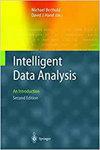How graph features from message passing affect graph classification and regression?
IF 0.8
4区 计算机科学
Q4 COMPUTER SCIENCE, ARTIFICIAL INTELLIGENCE
引用次数: 0
Abstract
Graph neural networks (GNNs) have been applied to various graph domains. However, GNNs based on the message passing scheme, which iteratively aggregates information from neighboring nodes, have difficulty learning to represent larger subgraph structures because of the nature of the scheme. We investigate the prediction performance of GNNs when the number of message passing iteration increases to capture larger subgraph structures on classification and regression tasks using various real-world graph datasets. Our empirical results show that the averaged features over nodes obtained by the message passing scheme in GNNs are likely to converge to a certain value, which significantly deteriorates the resulting prediction performance. This is in contrast to the state-of-the-art Weisfeiler–Lehman graph kernel, which has been used actively in machine learning for graphs, as it can comparably learn the large subgraph structures and its performance does not usually drop significantly drop from the first couple of rounds of iterations. Moreover, we report that when we apply node features obtained via GNNs to SVMs, the performance of the Weisfeiler-Lehman kernel can be superior to that of the graph convolutional model, which is a typically employed approach in GNNs.消息传递的图形特征如何影响图形分类和回归?
图神经网络(GNN)已被应用于各种图领域。然而,基于消息传递方案的图神经网络会迭代聚合相邻节点的信息,但由于该方案的性质,它很难学习表示更大的子图结构。我们利用各种实际图数据集,研究了当消息传递迭代次数增加时 GNN 的预测性能,以便在分类和回归任务中捕捉更大的子图结构。我们的实证结果表明,通过 GNN 中的消息传递方案获得的节点平均特征很可能会收敛到某个值,从而显著降低预测性能。这与最先进的 Weisfeiler-Lehman 图核形成了鲜明对比,后者已被积极用于图的机器学习,因为它可以学习大型子图结构,而且其性能通常不会在前几轮迭代后显著下降。此外,我们还报告说,当我们将通过 GNN 获得的节点特征应用于 SVM 时,Weisfeiler-Lehman 核的性能会优于图卷积模型,而图卷积模型是 GNN 通常采用的方法。
本文章由计算机程序翻译,如有差异,请以英文原文为准。
求助全文
约1分钟内获得全文
求助全文
来源期刊

Intelligent Data Analysis
工程技术-计算机:人工智能
CiteScore
2.20
自引率
5.90%
发文量
85
审稿时长
3.3 months
期刊介绍:
Intelligent Data Analysis provides a forum for the examination of issues related to the research and applications of Artificial Intelligence techniques in data analysis across a variety of disciplines. These techniques include (but are not limited to): all areas of data visualization, data pre-processing (fusion, editing, transformation, filtering, sampling), data engineering, database mining techniques, tools and applications, use of domain knowledge in data analysis, big data applications, evolutionary algorithms, machine learning, neural nets, fuzzy logic, statistical pattern recognition, knowledge filtering, and post-processing. In particular, papers are preferred that discuss development of new AI related data analysis architectures, methodologies, and techniques and their applications to various domains.
 求助内容:
求助内容: 应助结果提醒方式:
应助结果提醒方式:


